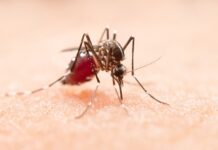Rising Cases of Acute Diarrheal Disease
India is experiencing a significant outbreak of food poisoning and stomach flu. As of December 22, 2024, the nation recorded over 1,000 outbreaks of acute diarrheal disease—the highest since data tracking began in 2009—along with 300 cases of food poisoning. Contaminated food and water, carrying bacteria, viruses, and parasites, are the primary causes of these illnesses. Weak food safety regulations, poor waste management, and unsanitary environments further contribute to the spread of infections. Ensuring safe drinking water remains a top priority, as most cases of acute diarrheal disease stem from unsafe water sources.
Symptoms of Food Poisoning and Stomach Flu
Common symptoms include nausea, vomiting, diarrhea, stomach cramps, dehydration, and fever. In severe cases, particularly among children, the elderly, and immunocompromised individuals, hospitalization may be necessary. The widespread use of antibiotics has also accelerated the emergence of drug-resistant bacteria, making treatment more difficult.
Preventive Measures: Personal and Community Efforts
Dr. Amit Saraf, Director of Internal Medicine at Jupiter Hospital Thane, emphasized the importance of personal hygiene and food safety. He stated, “Preventing such outbreaks requires collective effort. Individuals should practice frequent handwashing, drink purified water, and ensure food is cooked and stored properly. While street food remains popular, people should be cautious about consuming food from unhygienic sources.”
Strengthening Food Safety Measures
Authorities must enforce stricter food safety regulations, upgrade sanitation infrastructure, and launch public awareness campaigns on preventive measures. Investing in healthcare and rapid disease surveillance can help detect and control outbreaks before they escalate. Nationwide hygiene awareness programs, along with clean drinking water and effective waste management, can significantly reduce the prevalence of these preventable diseases.
Symptoms and High-Risk Populations
According to Dr. Rituja Ugalmugle of Wockhardt Hospitals, Mumbai Central, the most common symptoms include nausea, vomiting, diarrhea, abdominal cramps, dehydration, and fever. In severe cases, hospitalization is required, particularly for vulnerable populations such as children, the elderly, and those with weakened immune systems. As reported by timesofindia, notably, in 2010, children under five years old bore 40% of the foodborne disease burden in Southeast Asia.
Key Factors Contributing to Outbreaks
- Contaminated Water Sources: A significant portion of India’s population, both in urban and rural areas, lacks access to safe drinking water, increasing susceptibility to waterborne diseases.
- Food Contamination: Improper food handling and storage lead to widespread contamination.
- Antibiotic Resistance: Overuse and misuse of antibiotics have contributed to drug-resistant bacteria, complicating treatment efforts.
Government Initiatives for Disease Prevention
- Improving Sanitation Facilities: Authorities must ensure safe waste disposal, proper septic management, and accessible, clean public toilets to curb disease transmission.
- Ensuring Clean Drinking Water: Installing water purification systems, monitoring water quality, and supplying safe drinking water to all communities are critical steps.
- Strengthening Food Safety Regulations: Regular inspections, licensing requirements, and strict penalties for violations will help maintain hygiene standards.
- Raising Public Awareness: Large-scale campaigns should educate people about hygiene practices, food safety, and the risks of antibiotic misuse.
Community-Led Initiatives
- Promoting Hygiene Awareness: Schools, local institutions, and community leaders should advocate for better sanitation, handwashing, and safe food handling practices.
- Keeping Public Spaces Clean: Proper waste disposal and regular cleaning of public places and food markets are essential for disease control.
- Ensuring Access to Safe Water: Encouraging local water purification efforts and filtration systems can provide safer drinking water.
- Monitoring Street Food Vendors: Communities should oversee hygiene standards at street food stalls and local eateries, reporting violations when necessary.
Individual-Level Precautions
- Practicing Good Hygiene: Washing hands frequently, especially before meals and after using the toilet, reduces infection risks. Boiling or filtering drinking water ensures safety.
- Handling Food Safely: Cooking food thoroughly, refrigerating perishables, and avoiding spoiled or openly stored food can prevent foodborne illnesses. Choosing hygienic food stalls and avoiding raw or improperly stored food are wise precautions.
- Using Antibiotics Responsibly: Only take antibiotics when prescribed to prevent drug resistance and ensure effective treatment of infections.
By working together—individuals, communities, and policymakers—India can effectively combat foodborne diseases and build a healthier future for all.
























